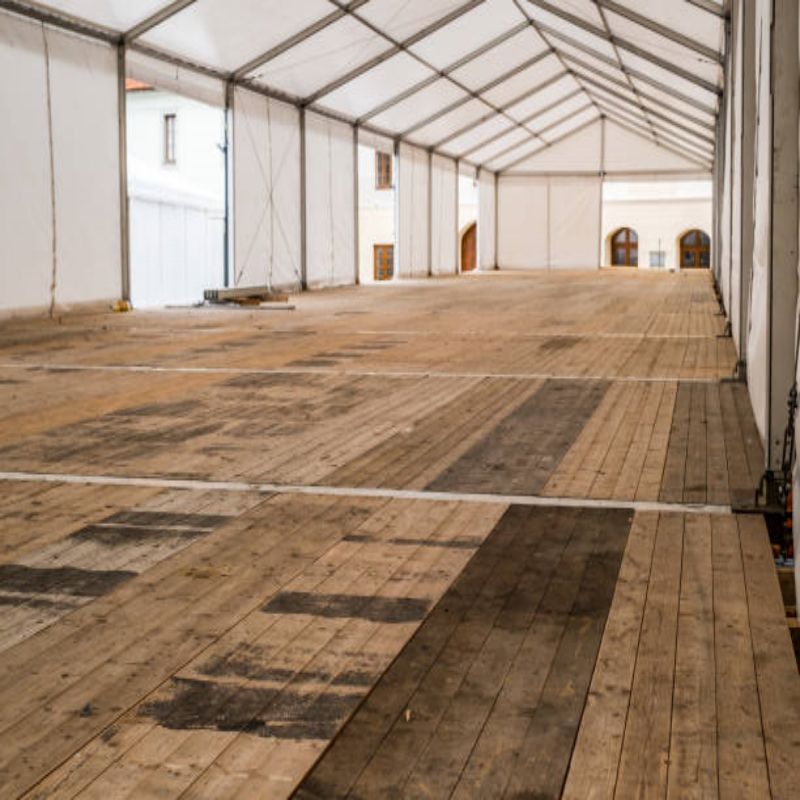Warehouse Tent vs. Traditional Warehouse Building: Which Is More Cost-Effective?
Introduction:
In today's competitive business landscape, companies are constantly looking for cost-effective solutions to meet their warehousing needs. One common question that arises is whether to invest in a traditional warehouse building or opt for a warehouse tent. In this article, we will explore the key factors that businesses should consider when making this decision.
1. Initial Investment Costs
When it comes to the initial investment costs, warehouse tents have a clear advantage over traditional warehouse buildings. Constructing a traditional warehouse building involves significant expenses, including land acquisition, construction materials, labor, and permits. On the other hand, warehouse tents are much more affordable and can be set up quickly without the need for extensive construction.
2. Flexibility and Scalability between Warehouse Tent vs. Traditional Warehouse Building
Warehouse tents offer businesses a high level of flexibility and scalability. Unlike traditional warehouse buildings, which have a fixed size and layout, warehouse tents can be easily expanded or downsized based on the changing needs of the business. This flexibility allows companies to adapt to fluctuations in demand and optimize their warehouse space accordingly.
3. Maintenance and Repair Costs
Another aspect to consider when comparing warehouse tents and traditional warehouse buildings is maintenance and repair costs. Traditional warehouse buildings often require regular maintenance, including repairs to the roof, walls, and flooring. These costs can add up over time. On the other hand, warehouse tents are designed to be durable and require minimal maintenance. In the event of damage, individual components of the tent can be easily replaced, reducing repair costs.
4. Energy Efficiency between Warehouse Tent vs. Traditional Warehouse Building
Energy efficiency is a crucial factor in today's environmentally conscious world. Traditional warehouse buildings can be energy-intensive to heat, cool, and light due to their larger size and construction materials. Warehouse tents, on the other hand, can be designed with energy-efficient features such as insulation and LED lighting, reducing overall energy consumption and costs.
5. Construction Time between Warehouse Tent vs. Traditional Warehouse Building
Constructing a traditional warehouse building can be a time-consuming process. It involves various stages, including site preparation, foundation construction, and building assembly. In contrast, warehouse tents can be set up quickly, allowing businesses to start their operations sooner. This shorter construction time can be particularly advantageous for companies with urgent warehousing needs or those operating in temporary locations.
6. Location Flexibility between Warehouse Tent vs. Traditional Warehouse Building
Warehouse tents offer businesses the flexibility to choose a wide range of locations for their warehousing needs. Unlike traditional warehouse buildings, which are typically fixed to a specific location, warehouse tents can be easily relocated if needed. This flexibility allows businesses to strategically position their warehouses closer to their customers or suppliers, minimizing transportation costs and improving overall efficiency.
7. Longevity and Durability between Warehouse Tent vs. Traditional Warehouse Building
Traditional warehouse buildings are designed to last for many years, but they can be susceptible to wear and tear over time. Warehouse tents, on the other hand, are made from high-quality materials that are resistant to harsh weather conditions and can withstand heavy use. With proper maintenance, a warehouse tent can provide a durable and long-lasting solution for businesses.
8. Customization Options
Customization is another important aspect to consider when comparing warehouse tents and traditional warehouse buildings. While traditional warehouse buildings offer limited customization options due to their fixed structure, warehouse tents can be easily customized to meet specific business requirements. This includes options for layout, partitioning, and the addition of features such as mezzanine floors.
9. Regulatory Compliance
Complying with local building codes and regulations is essential when constructing a traditional warehouse building. This can involve additional expenses and delays. Warehouse tents, on the other hand, may have fewer regulatory requirements depending on the local jurisdiction. However, it is important for businesses to ensure that their chosen warehouse tent complies with any relevant safety and zoning regulations.
10. Resale Value
Resale value is an often overlooked factor when considering the cost-effectiveness of warehouse options. Traditional warehouse buildings generally have a higher resale value compared to warehouse tents, as they are considered permanent structures. However, it is important to note that the resale value of a warehouse tent will depend on its condition and the current market demand for such structures.
Conclusion
Choosing between a warehouse tent and a traditional warehouse building requires careful consideration of various factors. While traditional warehouse buildings offer long-term stability and customization options, warehouse tents provide businesses with a cost-effective and flexible solution. Ultimately, the decision should be based on the specific needs and priorities of the business.

